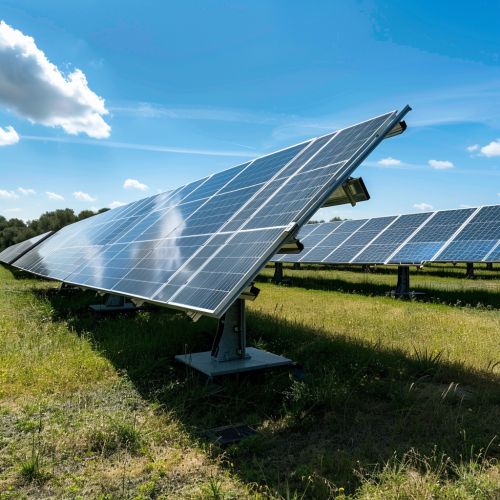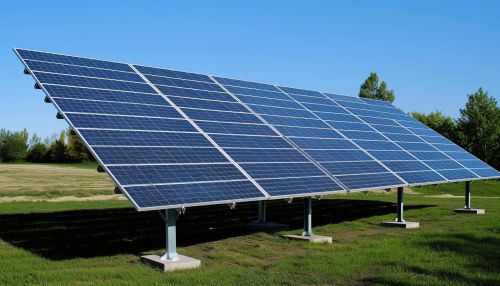Solar tracker
Overview
A solar tracker is a device that orients a payload toward the Sun. Payloads can be photovoltaic panels, reflectors, lenses or other optical devices. Solar trackers are used to minimize the angle of incidence between the incoming sunlight and a photovoltaic panel. This increases the amount of energy produced from a fixed amount of installed power generating capacity.


Types of Solar Trackers
Solar trackers can be categorized into two main types: single-axis and dual-axis.
Single-Axis Solar Trackers
Single-axis trackers have one degree of freedom that acts as an axis of rotation. The axis of rotation of single-axis trackers is typically aligned along a true North meridian. These trackers rotate from East to West over the course of the day. Such trackers are the most effective at high latitudes where the apparent motion of the Sun is not very high.
Dual-Axis Solar Trackers
Dual-axis trackers have two degrees of freedom that act as axes of rotation. These axes are typically normal to one another. The primary axis is the one which is fixed with respect to the ground. The secondary axis is the one that is referenced to the primary axis. Dual-axis trackers allow for optimum solar energy levels due to their ability to follow the Sun vertically and horizontally.
Operation of Solar Trackers
Solar trackers operate using a controller that orients the tracker in a direction that maximizes its exposure to solar radiation. The controller uses an algorithm that calculates the solar azimuth and zenith angles of the Sun. These angles are used to control the movement of the tracker.
Advantages and Disadvantages of Solar Trackers
While solar trackers can significantly increase the energy output of solar panels, they also have some disadvantages that need to be considered.
Advantages
The main advantage of solar trackers is their ability to follow the movement of the Sun throughout the day. This can increase the amount of solar energy that is harvested from the panels.
Disadvantages
The main disadvantage of solar trackers is that they require more maintenance than stationary solar panels. This is due to the mechanical parts that are required to move the panels. Additionally, solar trackers are more expensive than stationary panels.
Applications of Solar Trackers
Solar trackers are used in a variety of applications. These include photovoltaic systems, concentrated solar power systems, and solar furnaces.
Photovoltaic Systems
In photovoltaic systems, solar trackers help to minimize the angle of incidence between the incoming light and the panel, which increases the amount of energy produced.
Concentrated Solar Power Systems
In concentrated solar power systems, solar trackers are used to direct sunlight onto a small area.
Solar Furnaces
In solar furnaces, solar trackers are used to focus sunlight onto a small area to produce high temperatures.
